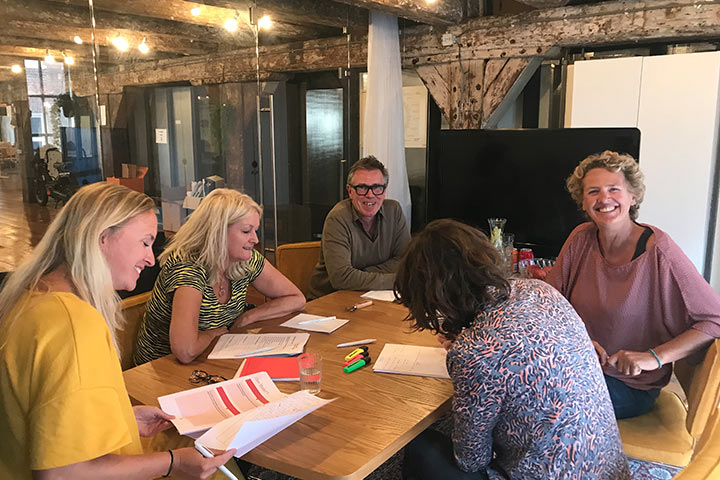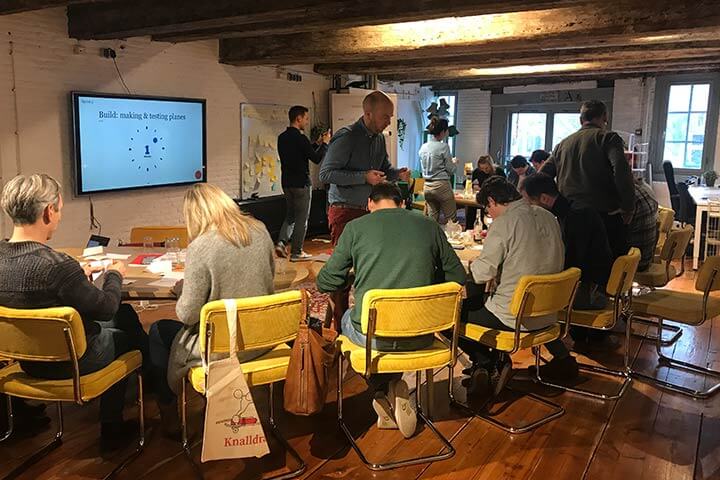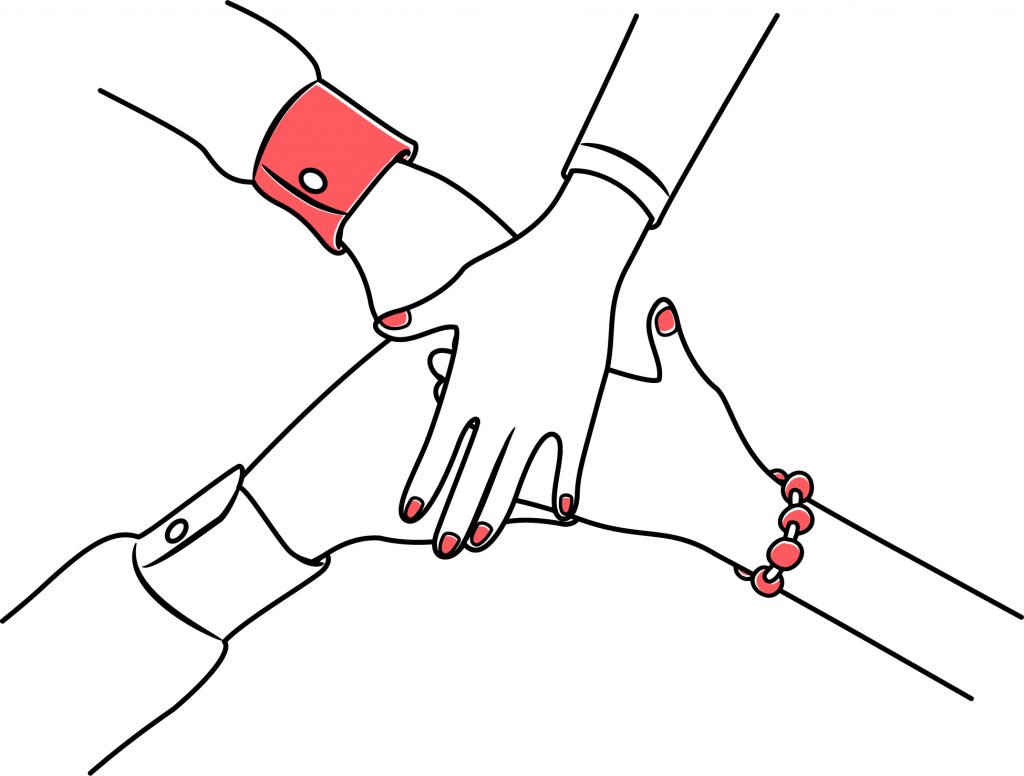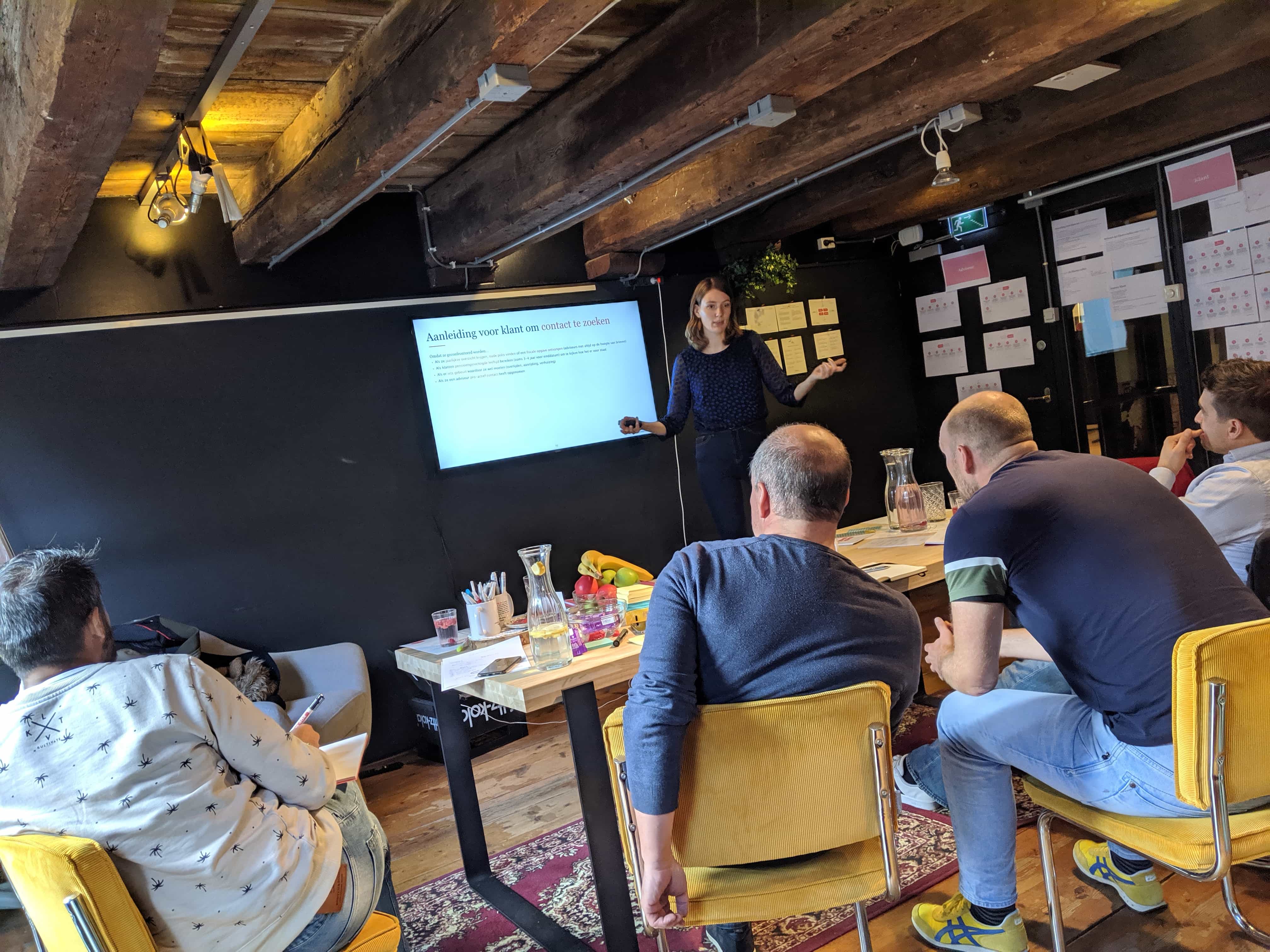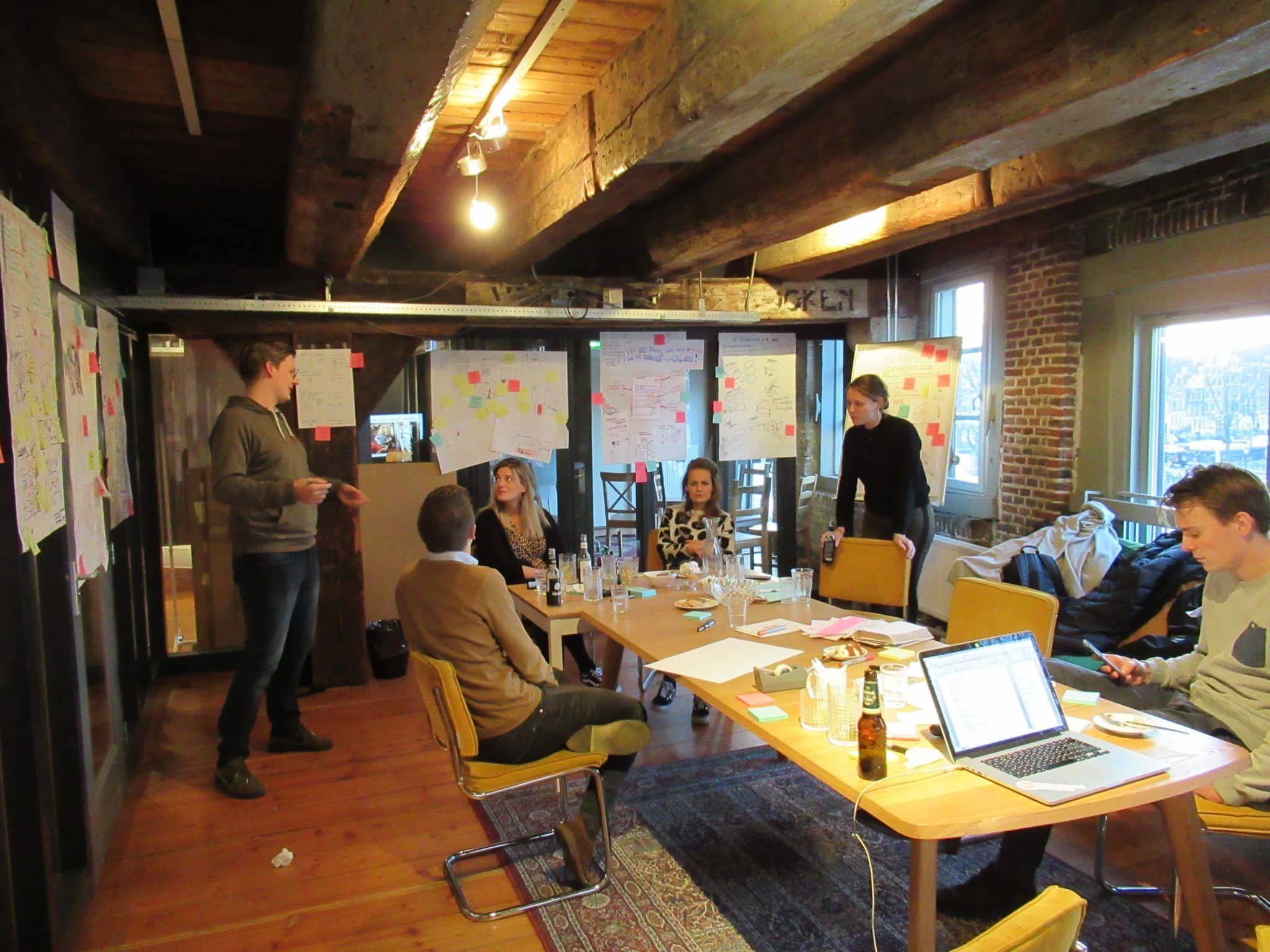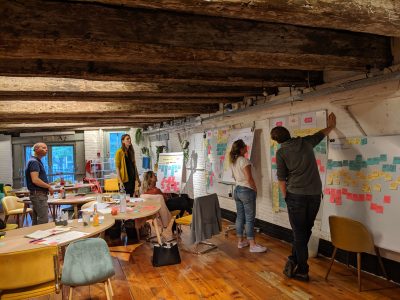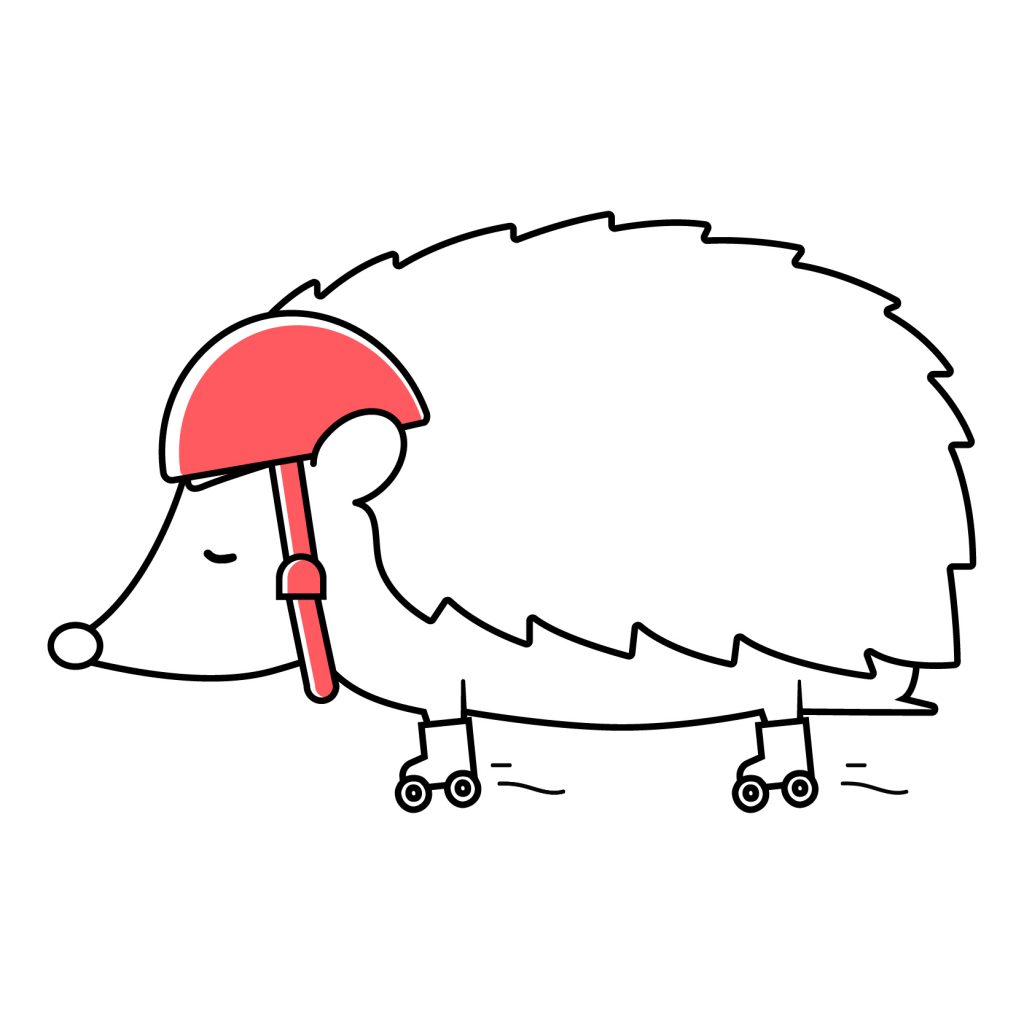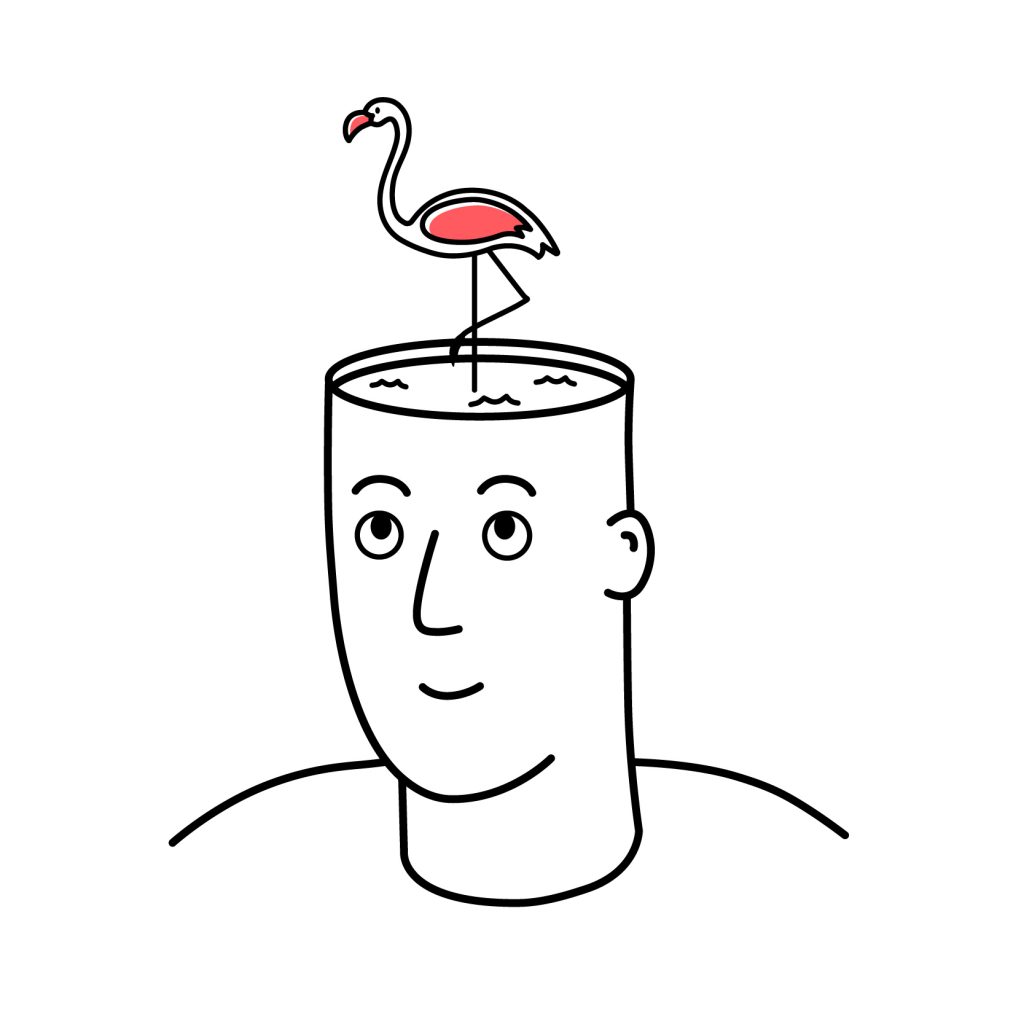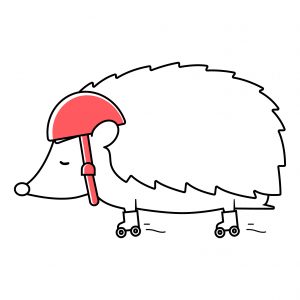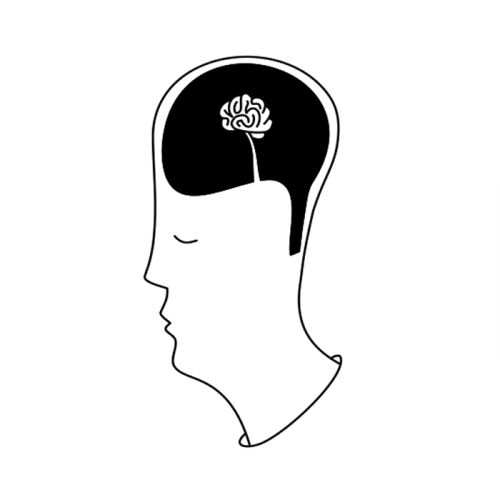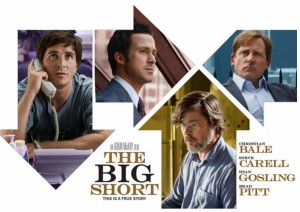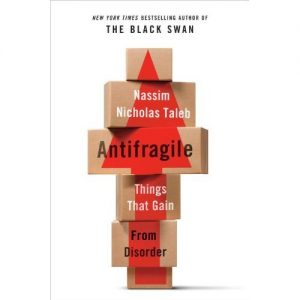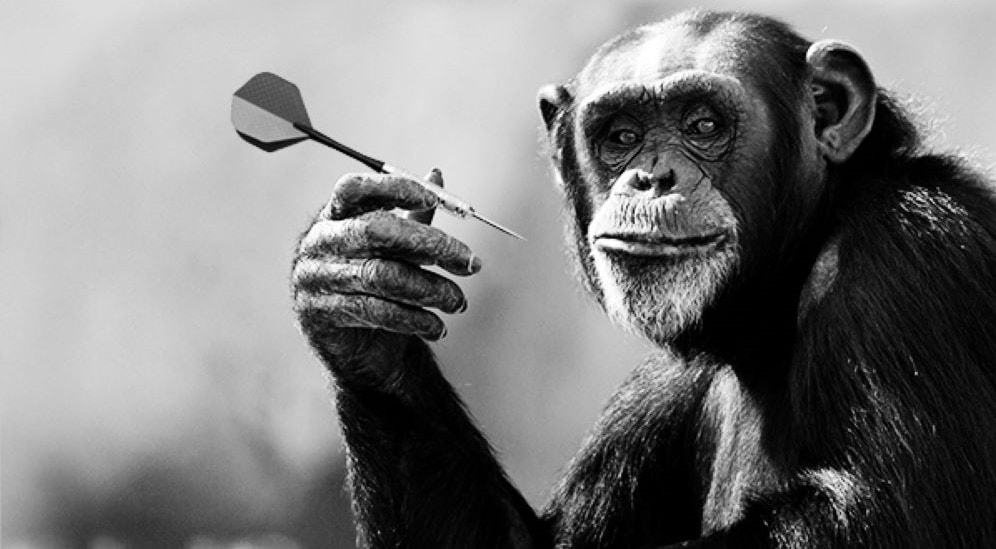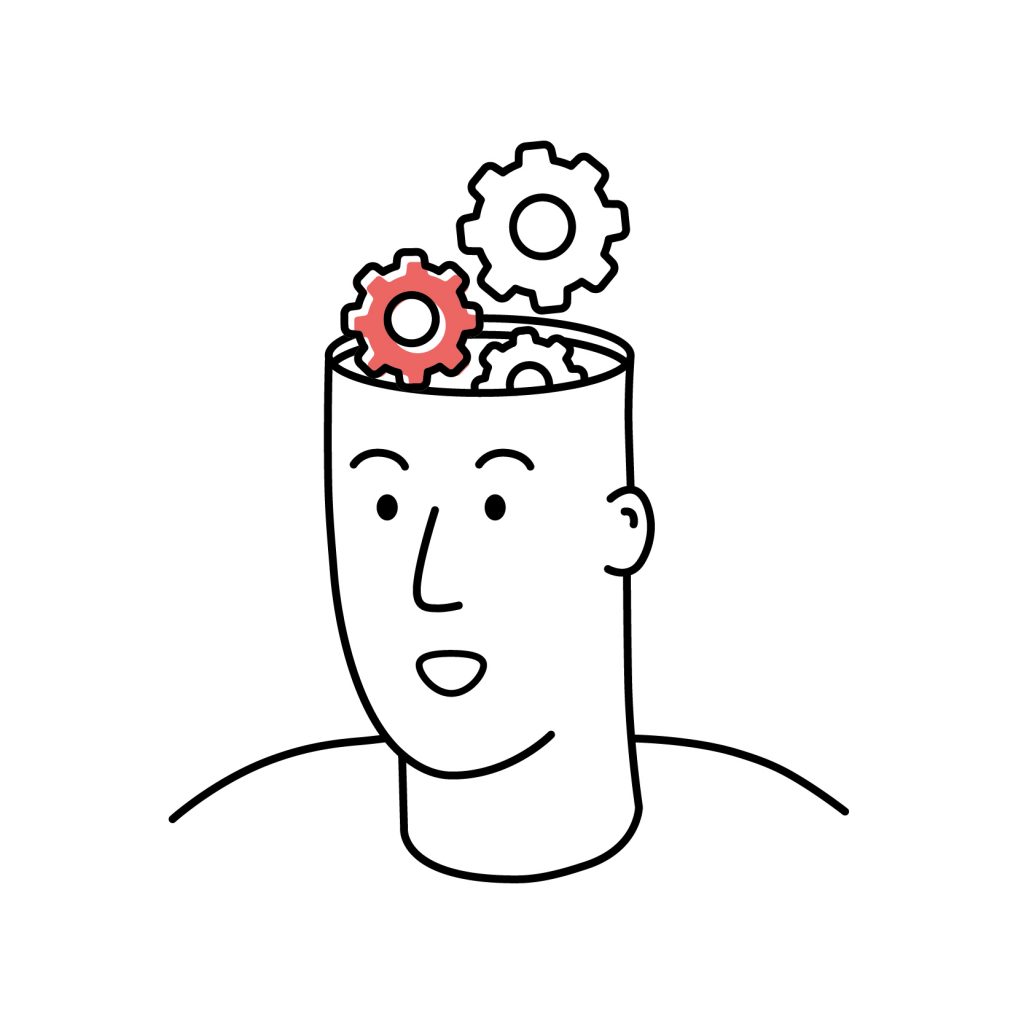
This blog post is the talk I gave at NowFest 2020, a global conference on Behavioural Science. We were asked to talk about how we successfully transformed from an ad agency to a design and innovation consultancy. This is the story of all the things we learned while making lots of bad decisions along the way. So if you work in the ad industry and you’re struggling with your business model, then this might provide you with some inspiration on where to look for answers. If you prefer to see the whole talk. I included the video below.
Part 1: The existential crisis as an agency
About ten years ago, Astrid and I were leading an advertising agency in Amsterdam. According to the market, we were doing great. We won a Dutch “Agency of the Year” award, and we were doing award-winning work for brands like Nike. The problem was: we hated every bit of it, and we felt that there were several trends that didn’t look promising for the future of the ad agency business model. Both our customers and the market were changing.
Customers were changing
After their CEO’s went on a pilgrimage to Silicon Valley, they all saw the light and every big client was going through two transformation waves:
-
- Digital transformation, which meant they were now getting obsessed with everything measurable and easy to optimise. Advertising started to be seen as this old medieval art in comparison with this new obsession, and investment in advertising shifted to programmatic and tactical, instead of creative.
- Agile transformation: our customers were starting to work in multi-disciplinary teams around customer segments and around customer journeys. The consequence of this is that more and more creative marketing was taking place within the teams, as opposed to being outsourced to agencies.
Markets were changing
Digital disruption was on its way. At that time we had a quote up our wall by Rei Inamoto – the former ECD from AKQA – that said: Business models from the least expected angles or players could disrupt your business faster than advertising can save it”. So more and more clients were betting their money on trying to cut costs and figure out how to fight the incumbents.
It was the hight of the aftermath of the financial crisis. Everyone in the industry was talking about how to build “the agency of the future”. But the problem was: All the interesting and exciting things were taking place outside our industry. To name four domains that inspired us:
- The Conversion Optimisation community was (and still is) the hacker avant-garde of digital marketing.
- The Persuasion design / UX community, because they re-introduced psychology into design.
- The Lean Startup Community, because they were combining both psychology and conversion optimization to figure out the laws of marketing growth.
- Most thinking about Creativity came out of the industry: Ideo introduced ‘Design Thinking’ as a creative process and Creativity.inc by Ed Catmull from Pixar on how to manage a culture of creative excellence.
We were deeply frustrated with our inability to transform the agency from within. Our creatives mistook creativity for originality and were obsessed with awards. Probably because they perfectly realised that what they were doing was utterly pointless.
Would you like to power up your team or project with behavioural intelligence?
Feel free to contact us. We are happy to tell you more about our consultancy or academy. Helping you innovate, transform or grow levering insights from behavioural science in practice.
Part 2: The path to transformation
(solution version 1)
In 2011 we decided to quit the agency we were leading and start our own company in an attempt to design a solution that could deal with all the challenges above. We called the company SUE, named after “A Boy Named SUE“, the beautiful song by Johny Cash. Four principles or beliefs formed the foundation of SUE:
The core of what we do is behavioural change, not communication.
You probably know the famous aphorism by Charly Munger who said “To a man with a hammer every problem looks like a nail”. Well, to a branding guy, every problem looks like an advertising problem. To an ad guy, every problem looks like an advertising problem. But a behavioural designer should be agnostic to the tools he or she uses to shape behaviour: comms, design, physical spaces, framing, technology,…we even did an intervention in which we used children to prevent parents from picking up their phone while driving. As long as it contributes to the desired behavioural outcome, the medium is just a tool. Behavioural designers combine psychology, technology and Creativity to figure out how to influence minds and shape behaviour.
We believe that creativity is a step by step process, not the product of genius creatives.
We were tired of the advertising myth of brilliant creative teams. We strongly believe that the quality of the output is a function of the quality of the input and the process.
We believe that the separation between research, strategy and creativity into silos makes no sense.
If you have a research agency for your Research, a strategy company for your big strategy, an ad agency for your Big Idea and a production company for your design and production, the process will produce lots of waste. They all tend to act upon the executive summary of the previous stage and selectively pick the insights that fit with their own framework. Instead, we felt that behavioural designers should do research and strategising themselves. If they did the research themselves, they would have had a much deeper understanding of the problem.
Since we’re dealing with humans: we should always be prototyping and testing to learn and improve.
We should shred our expert bias and embrace uncertainty and a hunger for learning and improving.
The idea sounded good in theory. But let’s first delve into what we did wrong:
- We still called ourselves an agency. Therefore in the mind of the market, they put us in the ad agency frame. That was problematic. We wanted to solve the briefings in different ways, but in the end, we were working for the campaign managers, and they just wanted a campaign. So we attracted ‘ad agency clients’.
- We made the classic startup mistake of hiring too many people who could work on the projects while neglecting supporting sales and marketing.
- We couldn’t figure out how to design our process in a way that made economic sense. We introduced the Behavioural Design Sprint as our method, but we had five people per sprint team.
- We also suffered from the famous Kruger-Dunning effect. We were very confident that we could quickly master marketing automation, but that problem of finding the sweet spot between technology and creativity was hard. If you think of it: most inbound marketing is obsessed with tactics, but sucks at impact.
We thought we had the answer to “the agency of the future”-challenge: introduce creative methodology, marketing technology and behavioural sciences into the process, and your clients will love it.
The problem was: We were thinking too much inside-out. We were trying to transform from within, but the problem was the ad industry itself.
Back in 2017, this culminated in a crisis. On Easter day, we were sitting in a supermarket eating breakfast, exhausted with a 6-month-old baby that didn’t sleep and our accountant called. It’s never good news when your account calls on a holiday. He said: are you guys aware of the fact that you are loosing 100k per month and you’ll be bankrupt within three months if you don’t act?
That sucked.
Big time.
We had about two days to figure out if we would stop or tackle the problem. We chose the latter.
Part 3: When we finally got it right.
The nice thing with running out of cash is that you have to make bold decisions. There are no other options. We did a series of interventions:
Intervention 1: Staff.
We had to fire about 15 people. That burned our cash reserves even more, but there was no alternative. We needed to start from zero if we wanted to succeed.
Intervention 2: We stopped being an agency and turned into a consultancy.
The difference turns out to be substantial. We were betting on the belief that the market changed from outsourcing creativity to agencies, to developing customer intelligence capabilities internally. So said to clients: don’t hire us to do your campaign, but hire us to help you to improve your product, service, marketing or customer experience through behavioural science.
Intervention 3: We decided to claim the word “Behavioural Design”.
At that point, the term was not owned by anyone. So the dilemma we had was: Nobody knows behavioural design, so it would be pure suicide to start a company on something that doesn’t exist. ON the other hand, it held the promise of a new story that we could own.
Intervention 4: The business model was still very fragile, so we started the Behavioural Design Academy.
We figured that if the market was shifting to more capability development, we should begin to offer training in how to use behavioural science to improve products, service and customer journey through a deeper understanding of human psychology.
Intervention 5: We productised our offering.
We were fed up with budget discussions, so we re-framed the whole pricing away from hourly rates to value-based pricing: you pay for the behavioural design sprint process. A 13-days process in which we do behavioural research, spot opportunities, come up with ideas, prototype the most promising ones, and test them with the users. A sprint is
Intervention 6: We made the Behavioural Design Method© the hero.
And by doing that we challenge some problematic market conventions worth solving: It solves the problem that the research industry is facing of not being able to turn insight into ideas. It solved the strategy problem of not being able to validate the power of the strategy until it’s too late – i.e. when the execution doesn’t work -, because we prototype and test the strategy right away.
What have we learned so far:
- The Behavioural Design Academy is a huge success: We had over 45 nationalities who flew in for our two-day masterclass.
- We are doing more in-company training programs all over the world, training teams in the Behavioural Design Method©.
- We spiralled out of advertising and are now working on projects that exceed our wildest dreams: to win elections, fight radicalisation, transform team behaviour, design spaces, get people to save more, get people to donate. We had the honour to work on all continents for major brands and organizations.
- Our clients like and respect us for what we do. It makes a great deal of difference if you’re in the business of making your clients smarter, instead of producing their campaigns. As an ad agency, your clients like you, but don’t respect you.
We transformed our company by putting deep human understanding at the heart of what we do. All the rest follows from this premise.
Want applied Behavioural Design delivered to your inbox?
Join over 5.000 forward-thinking leaders, innovators and professionals who use our insights to amplify their impact, growth and transformation by injecting behavioural intelligence into their organisation and projects.
How do you do. Our name is SUE.
Do you want to learn more?
Suppose you want to learn more about how influence works. In that case, you might want to consider joining our Behavioural Design Academy, our officially accredited educational institution that already trained 2500+ people from 45+ countries in applied Behavioural Design. Or book an in-company training or one-day workshop for your team. In our top-notch training, we teach the Behavioural Design Method© and the Influence Framework©. Two powerful tools to make behavioural change happen in practice.
You can also hire SUE to help you to bring an innovative perspective on your product, service, policy or marketing. In a Behavioural Design Sprint, we help you shape choice and desired behaviours using a mix of behavioural psychology and creativity.
You can download the Behavioural Design Fundamentals Course brochure, contact us here or subscribe to our Behavioural Design Digest. This is our weekly newsletter in which we deconstruct how influence works in work, life and society.
Or maybe, you’re just curious about SUE | Behavioural Design. Here’s where you can read our backstory.
